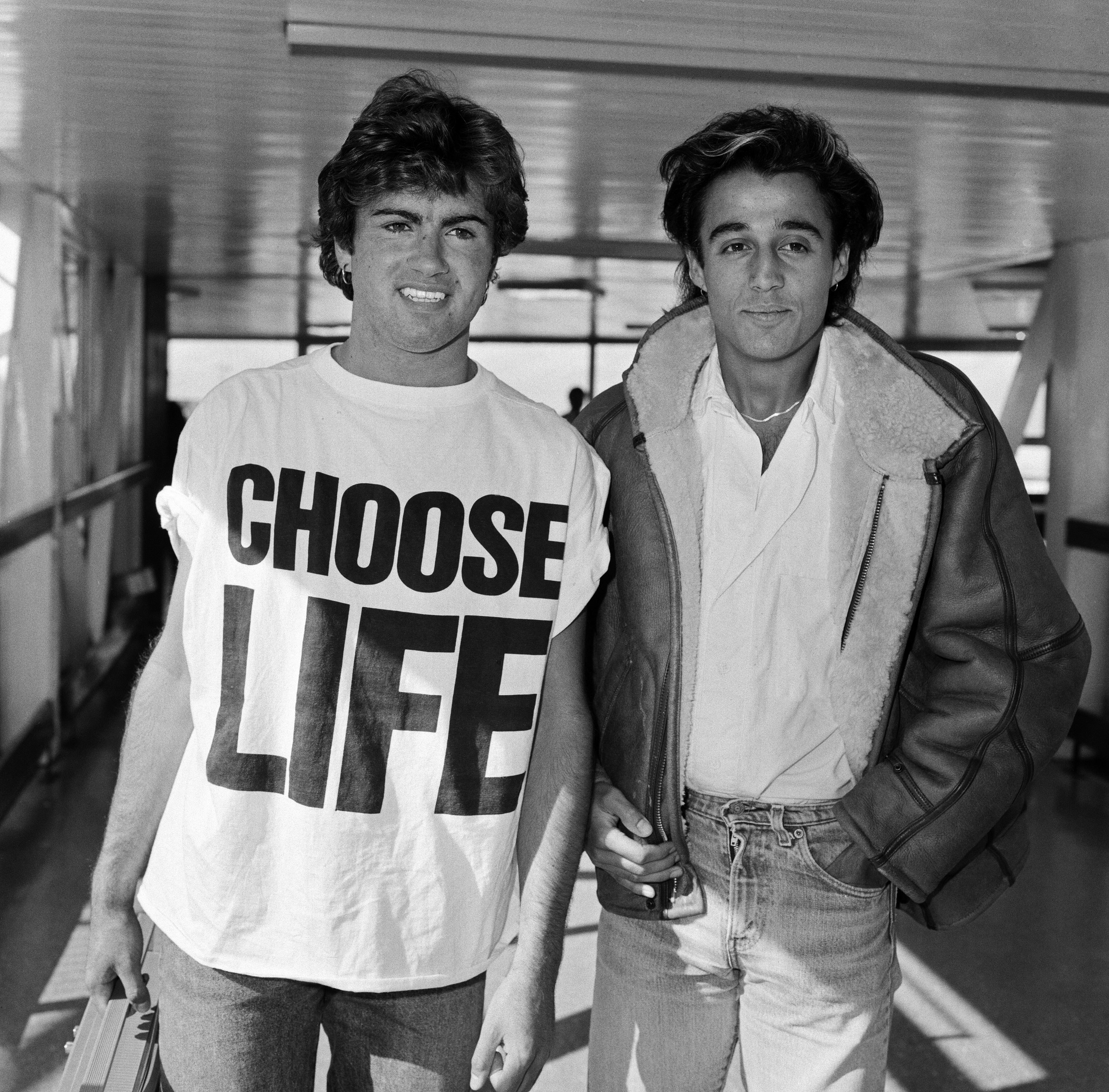Fashion Meets Politics
No history of the political t-shirt could go without mentioning Katharine Hamnett, who caused a stir in the 1980s with her impactful political slogans in bold type.

Katharine Hamnett – one of the pioneers of modern British fashion, strict buddhist, first designer to win the British Fashion Council’s “Designer of the Year” award in 1984. During decades of unbridled consumerism, Hamnett took the rhetoric of advertising and refashioned it for liberal political causes. “Her most famous moment took place upon being invited to a reception at the heart of British political life, 10 Downing Street. Sneaking a t-shirt in under her coat, she shook Margaret Thatcher’s hand wearing ‘58% DON’T WANT PERSHING’, a statement reiterating the public opposition to the Prime Minister granting the US permission to station nuclear missiles on British soil” [1]. The image ended up on the front cover of newspapers, bringing widespread attention to the Campaign for Nuclear Disarmament cause – according to Whitehall legend, it was one of the few times ministers ever saw the Iron Lady visibly rattled.

From then on, Hamnett officially launched the T-shirt’s sartorial power to become a tool for activism, a wearable placard for her passion in current political affiairs and soical justice issues, such as gender equality, high educational costs, environmental sustainability etc. Due to her very over-the-top design motifs and her public dislike of Jacob Rees-Mogg – the British politician who supports Brexit for the conservative party, she has made quite a few political opponents from the very beginning of her design career,being in the centre of controversies is something she has never shield away from. Despite having a considerable amount of cult following which mainly consists of the liberal parties, she struggled to be accpeted into the traditional media and had very little commercial attention due to the nature of her design and the fact that staying politically charged can hold dangers for companies. Hamnett is facing her biggest challenge nowadays as our social climate has became more sensitive than ever – “There was this feeling that you could get away with things. It’s something we don’t have now, with an illiberal government and antiterrorist legislation. You can now be arrested for wearing a “Free Tibet” T-shirt, which is unbelievable. In the 1980s, you could break the rules” [2].
Living by strict buddhlist ethics, Katharine Hamnett has always been environmentally conscious. After finding out cotton agriculture was responsible for 20,000 deaths per year from accidental pesticide poisoning, she jumped on the frontier of “making clothes the greener way”. Not one to sit and patiently wait for tides to change, Katharine quickly cleaned up her practices. Her Autumn/Winter 1989 Clean Up Or Die collection used organic cotton and sustainable fabrics, and in 2005 she designed organic cotton T-shirts for Oxfam’s Make Poverty History campaign.

Katharine Hamnett is the role model we all need – not only did she pioneer the slogan t-shirts and distressed denim trend, she was also one of the first female desginers ambitious enough to put herself out there in the fashion industry back when it was “viewed more as a male trade, in a time when ‘a woman’s dream was generally secretarial stuff or dress making'” [3].
Being the one to subvert unwritten social rules of appropriate pursuits limited options for women was not easy, we have certainly seen a change of climate in the design industry and now that majority of my classmates in the design course are talented females students set to start their career in the field. It is now definitely a much more gender- inclusive environment compared to back when the activists struggled in the 70s.
“Designers are inevitably subject to the ideas and influences of their social context, their designs must reflect their values, and that the growing professionalization of the design business is at present to the advantage of creative people”[4], I hope that in the future, designers like Katharine Hamnett get to be discussed and acknowledged more widely by mainstream media, and her works as well as her great cause would have a larger platform to impact the younger generations.
reference:
- Hess, L. (2018). A Brief History of The Political T-shirt. https://www.dazeddigital.com/fashion/article/39007/ [Accessed 10/4/19]
- Hamnett, K. (2015). Remembering The 80s. https://www.independent.co.uk/news/uk/this-britain/remembering-the-80s-6101125.html [Accessed 10/4/19]
- Connory, J. (2017). Plotting the Historical Pipeline of Women in Graphic Design.
- Lewis, J. (1989). Women Designers – Is There a Gender Gap?
I really enjoyed this piece! 😊
Personally, I often struggle with how inseparable design and consumerism is – or how design’s primary purpose seems to be situated in selling a product or idea. So being able to learn more about a design and fashion activist is inspiring. I think it’s a great reminder of how designers have a choice in what they choose to promote. Not all “selling” is necessarily socially or environmentally damaging.
I was struck by the old photos you’ve included, because of how t-shirts with typographic calls to action seem so ubiquitous nowadays! (I’m thinking LGBTQIA+, Feminism, Global Warming tees) I just never stopped to wonder that there could be a history behind them.
I think of t-shirts as youthful, casual and practical because of how they prioritise comfort and remain affordable. I admire the way Hamnett used such a widely-accessible garment (as opposed to, say a suit and gown) as a medium of protest. It seems to show how she utilised her understanding of the market, and demographics, to spark conversations about her activist and political views.
Design like Hamnett’s is definitely powerful, purposeful and shouldn’t be forgotten, thanks for shining a light on her work!
LikeLike